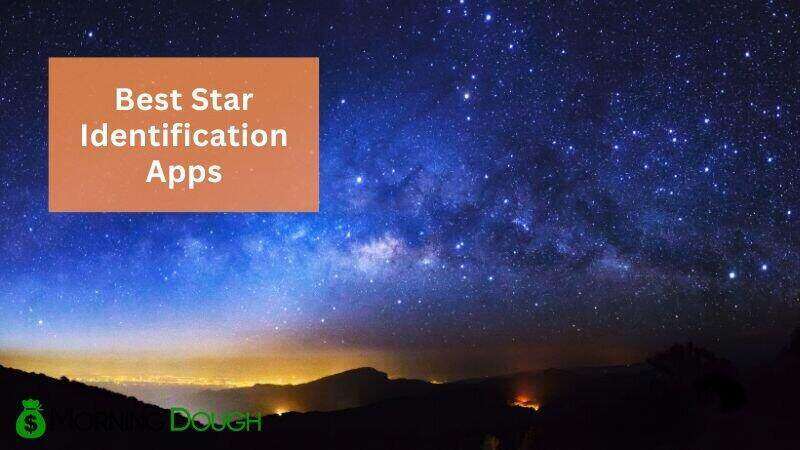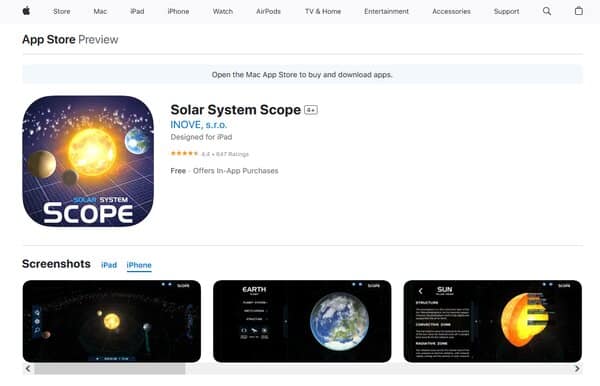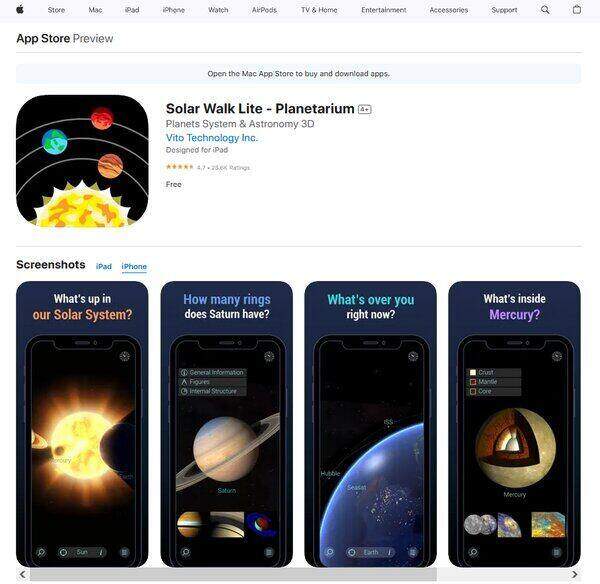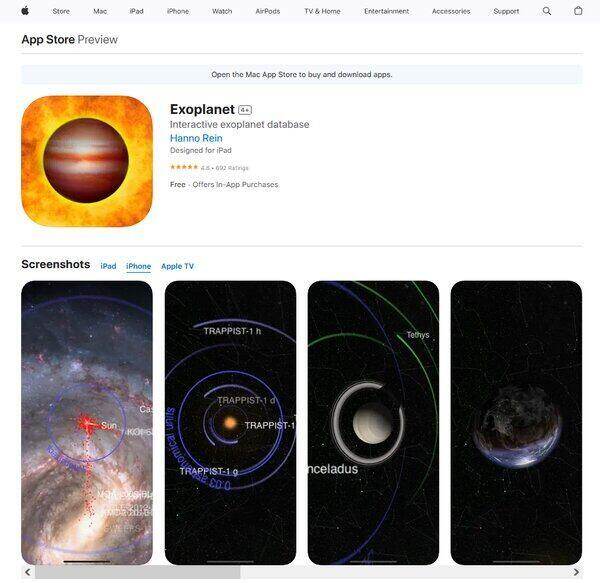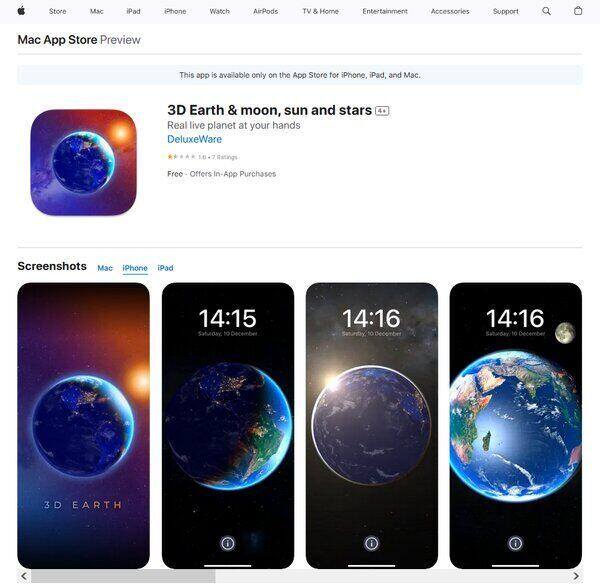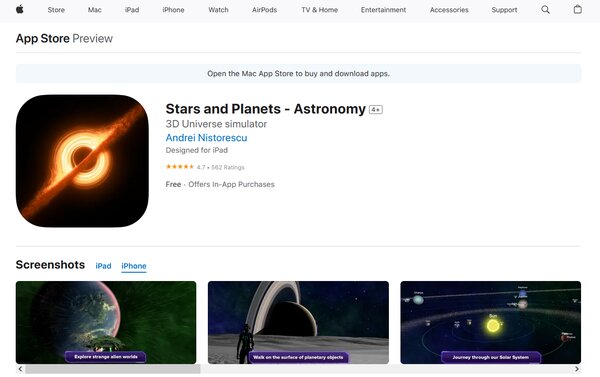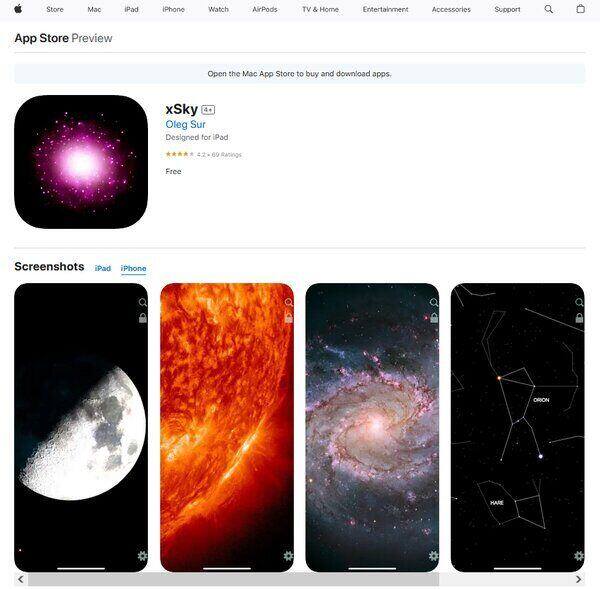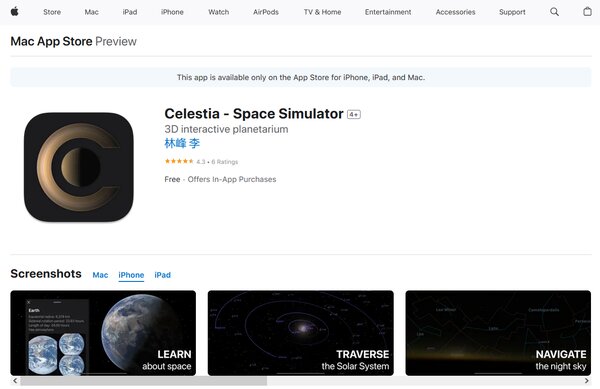8 Best Star Identification Apps
Star Identification App
Exploring the night sky has been a source of wonder and curiosity for humanity throughout history. With the advent of technology, the stars are no longer just distant points of light, they are now within our grasp, thanks to the new technology of a star identification app. These applications have revolutionized the way we interact with the cosmos, making astronomy accessible to everyone with a smartphone.
The Need for Star Identification App
The fascination with the celestial bodies is not just limited to astronomers, it’s a shared human experience. However, not everyone has the luxury of owning a telescope or the knowledge to navigate the night sky. This is where the star identification app comes into play. It serves as a digital planetarium, fitting snugly in your pocket, ready to unveil the mysteries of the universe at a moment’s notice.
Star identification app caters to a wide range of users, from casual stargazers to serious astronomy enthusiasts. It offers a plethora of features that enhance the stargazing experience. With just a few taps, users can point their devices to the sky and identify stars, constellations, planets, and even satellites like the International Space Station. The star identification app often comes with augmented reality (AR) capabilities, overlaying constellation images onto the real sky, making identification intuitive and engaging.
The educational aspect of these apps cannot be overstated. They often contain rich databases with information about celestial objects, including their history, mythology, and scientific data. This transforms a simple stargazing session into an informative learning experience that can ignite a lifelong passion for astronomy.
Moreover, the social and communal aspects of these apps encourage users to share their discoveries with friends and fellow stargazers, fostering a community of skywatchers. Some apps even allow users to track and receive notifications for celestial events, ensuring they don’t miss out on phenomena such as meteor showers or planet alignments.
The market for star identification apps is growing, reflecting an increasing public interest in astronomy. The convenience and features offered by these apps make them an indispensable tool for anyone looking to explore the night sky. Whether it’s to satisfy a momentary curiosity or to engage in a more in-depth astronomical exploration, star identification apps are opening the universe to new audiences, making the wonders of the cosmos more accessible than ever before.
8 Best Star Identification Apps
- Solar System Scope
- NASA
- Solar Walk
- Exoplanet
- 3D Solar System
- Stars and Planets Astronomy
- xSky
- Celestia Space Simulator
How does Star Identification App work?
Star identification app is a fusion of astronomy and technology, designed to make stargazing an accessible and enriching experience for everyone. This star identification app utilizes the GPS and compass in your smartphone or tablet to determine your location and the orientation of your device. When you point your device towards the sky, the app uses this data to display a map of the stars, planets, constellations, and other celestial bodies that are currently overhead.
The apps often incorporate augmented reality (AR) to overlay the star map onto the live camera feed from your device, providing a seamless and interactive way to identify and learn about different objects in the night sky. Some apps also include features like time travel, allowing you to see the sky at different points in the past or future, and notifications for celestial events like meteor showers or planet visibility.
How to choose a Star Identification App?
Choosing the right star identification app involves considering several factors to ensure that the app meets your stargazing needs and preferences. Firstly, consider the ease of use and user interface of the app. It should be intuitive and straightforward, allowing you to navigate the features without confusion. The app’s accuracy in identifying celestial objects is also crucial, as it should provide reliable information about what you’re observing.
Another important aspect is the depth of the app’s database and the detail of information provided. Some apps offer extensive databases with hundreds of thousands of stars and objects, complete with detailed descriptions, history, and mythology. If you’re interested in learning more about astronomy, look for apps that include educational content such as articles, videos, and quizzes.
For those interested in astrophotography, some apps come equipped with tools and features to assist with planning and capturing celestial events. Additionally, consider whether the app offers customization options, such as adjusting for light pollution or setting filters to enhance your viewing experience.
The star identification app’s compatibility with your device and operating system is another key factor. Some apps are designed specifically for certain platforms, so ensure the app you choose works well with your hardware. Lastly, consider the cost of the app, including any subscription fees for premium features. While many apps offer free versions, some of the more advanced features may require a paid subscription. Choose an app that provides a good balance between cost and the features you need to enjoy your stargazing experience to the fullest.
Best Star Identification App
1. Solar System Scope
Solar System Scope is an interactive star identification app that offers a dynamic 3D simulation of the solar system and the night sky. Designed to be both educational and entertaining, it serves as a virtual planetarium for users of all ages. The star identification app provides a real-time model of our solar system, allowing users to explore celestial bodies, their movements, and various astronomical phenomena. With its user-friendly interface and visually appealing graphics, Solar System Scope makes learning about space both accessible and engaging.
What does Solar System Scope do?
Solar System Scope transforms your device into a pocket-sized observatory. This star identification app enables you to navigate through the solar system, examine planets, moons, stars, and constellations from any point on Earth or in space. The app’s real-time simulation reflects the current positions and movements of celestial objects, offering a comprehensive view of the cosmos. Whether you’re an amateur astronomer, a student, or simply curious about the universe, Solar System Scope provides a hands-on experience to observe the night sky, learn about space, and witness the grandeur of the cosmos unfold in front of you.
Solar System Scope Key Features
Real-Time 3D Simulation: Solar System Scope’s core feature is its ability to simulate the solar system and night sky in real-time 3D. This immersive experience allows users to visualize the positions and orbits of planets and other celestial bodies as they would appear at any given moment.
Educational Content: The app includes an encyclopedia filled with fascinating facts and information about the various celestial objects within our solar system. This feature is designed to educate users and provide a deeper understanding of the cosmos.
Night Sky Exploration: Users can employ the app to identify stars and constellations in the night sky from their location. Advanced options simulate various astronomical lines and grids, enhancing the stargazing experience.
Scientific Accuracy: The simulations within Solar System Scope are based on up-to-date orbital parameters published by NASA, ensuring that the positions and movements of celestial bodies are represented accurately.
Accessibility for All Ages: The app is tailored to be intuitive and easy to use, making it suitable for space enthusiasts of all ages, including children as young as four years old.
High-Quality Visuals: Solar System Scope boasts unique maps and realistic 3D visualizations based on NASA data, offering users a true-color representation of space. High-quality textures are available for an enhanced visual experience.
Community Engagement: The developers encourage users to become part of their vision by providing feedback and suggestions for new features, fostering a community of space enthusiasts and contributing to the app’s ongoing development.
2. NASA
NASA’s app serves as a gateway to the latest news, images, and videos from the agency, offering a comprehensive view of its ongoing missions and discoveries. It provides users with a direct line to NASA’s wealth of information on space exploration, Earth science, and the universe. The star identification app is designed to cater to space enthusiasts of all ages, providing educational content that inspires and informs. Whether you’re interested in the latest Mars rover updates, Earth’s changing climate, or stunning images from the Hubble Space Telescope, NASA’s app brings the universe to your fingertips.
What does NASA do?
NASA, the National Aeronautics and Space Administration, is at the forefront of global efforts in space exploration, scientific discovery, and aeronautics research. It conducts satellite missions to study Earth’s climate, sends probes to distant planets, and works on the development of new technologies for future space missions. NASA’s endeavors extend beyond our solar system, seeking to answer fundamental questions about our place in the universe. The agency also collaborates with international partners to ensure a continued human presence in space, aiming to send astronauts back to the Moon and eventually to Mars. Through its missions, NASA strives to inspire the next generation of scientists, engineers, and explorers.
NASA Key Features
Live Streaming of NASA TV – Users can watch live broadcasts from NASA TV, including launches, press conferences, and other major events, providing an up-close look at the agency’s activities.
Vast Image and Video Library – The app offers access to a massive collection of images and videos from NASA’s missions, allowing users to explore the beauty and complexity of space and our home planet.
Latest News and Features – Stay updated with the latest news, feature stories, and articles about NASA’s missions, discoveries, and future plans.
Augmented Reality (AR) Experiences – Some sections of the app include AR features that bring spacecraft, planets, and more into your living room, offering an interactive way to learn about space.
Educational Resources – The app provides a wealth of educational materials, including information about ongoing missions, the solar system, and the universe, making it a valuable resource for students and teachers alike.
Mission Information and Countdowns – Detailed information about past, current, and future missions, including countdown clocks for upcoming launches, helps users stay informed about NASA’s exploratory efforts.
Night Sky Tracker – An interactive feature that allows users to identify stars, planets, and satellites in the night sky, enhancing the stargazing experience.
Customizable Notifications – Users can opt to receive notifications about significant events, such as spacecraft launches, live broadcasts, and new content additions, ensuring they never miss out on exciting developments.
3. Solar Walk
Solar Walk is an interactive 3D planetarium and star identification app that offers users a virtual journey through the cosmos. Designed to be both educational and entertaining, it serves as a pocket-sized guide to the universe, allowing enthusiasts and students alike to explore the solar system and beyond. The app’s immersive experience is enhanced by its detailed 3D models and extensive information on celestial bodies, making it a valuable resource for those looking to deepen their understanding of space.
What does Solar Walk do?
Solar Walk transforms your mobile device into a dynamic and interactive planetarium. It provides a comprehensive 3D model of the solar system, complete with real-time positions of planets, moons, and other celestial bodies. Users can delve into the internal structures of these bodies, access a wealth of information and facts, and view galleries of real astronomical images. The star identification app also includes an Orrery Mode for a schematic view of the solar system, and an Anaglyph 3D feature for a more immersive experience with 3D glasses. With its user-friendly interface and stunning visuals, Solar Walk makes learning about the cosmos accessible and engaging for all ages.
Solar Walk Key Features
Interactive 3D Model of The Solar System: Solar Walk’s core feature is its detailed and interactive 3D representation of the solar system, which allows users to navigate through space and view celestial bodies in real-time.
Extensive Celestial Body Information: Each planet and moon within the app comes with in-depth information, including internal structure details, interesting facts, and a gallery of images from telescopes or NASA missions.
Orrery Mode: This feature enables users to toggle between a realistic and schematic representation of the solar system, providing a clearer understanding of the sizes and distances between objects.
Anaglyph 3D: For those with anaglyph 3D glasses, this option adds another layer of immersion, giving a three-dimensional view of the solar system’s splendor.
Zoom Capabilities: Users can zoom in to see objects up close or zoom out to view the solar system’s position within the Milky Way galaxy.
No Internet Connection Required: Solar Walk is designed to function fully offline, making it a convenient tool for learning about space anytime, anywhere.
Educational Tool: The app is not only a source of entertainment but also serves as an educational resource, making it suitable for classroom settings or self-guided learning.
Virtual Space Flights: Users can simulate flights through the universe, offering a unique perspective on the vastness of space and the relative positions of celestial bodies.
4. Exoplanet
Exoplanet is an educational iOS star identification app that serves as an interactive catalog of all known exoplanets, providing users with visualizations and animations to enhance their understanding of planets orbiting stars beyond our Solar System. It’s a tool designed for both the astronomy enthusiast and the professional researcher, offering a wealth of information that is updated promptly with new discoveries. The app’s ability to model our Milky Way and provide a cosmic perspective from Earth to the cosmic microwave background makes it a unique educational resource.
What does Exoplanet do?
Exoplanet functions as a dynamic guide to the universe beyond our solar neighborhood. It allows users to explore a comprehensive and regularly updated database of exoplanets, complete with interactive features such as 3D renderings of planetary distributions in the galaxy. Users can virtually travel to different exoplanetary systems, view them in motion, and even use augmented reality to see the location of these planets in the night sky from their own perspective on Earth. The app also offers detailed information on each planet, including discovery methods, orbital characteristics, and an extensive list of facts about the planet and its host star.
Exoplanet Key Features
Interactive 3D Visualizations: Exoplanet provides a three-dimensional model of the Milky Way, allowing users to explore the universe from the surface of the Earth to the cosmic microwave background. This feature offers a visual journey through space, making the abstract concept of distant planets more tangible.
Real-Time Database Updates: The app is updated within hours of new exoplanet discoveries being confirmed, ensuring that users have access to the most current information available in the field of exoplanetary science.
Augmented Reality Sky View: By utilizing the device’s GPS, compass, and gyroscope, Exoplanet offers an augmented reality feature that overlays the positions of exoplanets onto the night sky as seen from the user’s location, providing an immersive stargazing experience.
Detailed Exoplanet Database: Each exoplanet entry in the app’s database includes a summary page with detection techniques, animated graphics for size and rotation comparisons, star charts, and a comprehensive list of data about the planet and its star.
Educational Resources: Exoplanet is not just a tool for exploration but also serves as an educational platform, offering articles, videos, and interviews with astronomers, as well as opportunities for users to engage in citizen science projects.
Personalized Exploration: Users can tailor their exploration of the cosmos with various filters and search options, allowing them to focus on aspects of exoplanets that interest them the most, whether it’s the potential for habitability or the visual beauty of these distant worlds.
Professional Astronomer Development: The app’s credibility is bolstered by the fact that it has been developed and maintained by a professional astronomer, ensuring that the information is accurate and the features are scientifically sound.
5. 3D Solar System
3D Solar System offers an immersive journey through our cosmic neighborhood, leveraging the power of modern technology to bring the wonders of the universe right to your fingertips. This star identification app utilizes the robust Apple Metal engine to render breathtaking 3D models of Earth, the moon, the sun, and a vast array of stars and galaxies. With its real-time rendering capabilities, users can explore a highly detailed Earth model, complete with texture bumping that reveals mountains and hills, and experience the accurate positions of the sun and moon relative to Earth. The app’s ability to show your location adds a personal touch, grounding the cosmic experience in the user’s immediate reality. Furthermore, the inclusion of ultimate optic effects, such as the sun’s rays hitting the camera lens, and an autorotate function, enhances the interactive experience. The app also features an atmospheric effect around Earth and realistic water reflections, adding layers of realism to the virtual exploration of space.
What does 3D Solar System do?
3D Solar System transforms your device into a gateway to the cosmos, offering a comprehensive and interactive exploration of our solar system and beyond. It provides users with a real-time rendered 3D image of Earth, complete with accurate sun and moon positions. The app’s high-quality earth texture and detailed topography allow users to see the planet’s surface features like never before. By leveraging geolocation services, it personalizes the experience by showing the user’s location on the globe. The app’s advanced optic effects create a visually stunning representation of sunlight interacting with the Earth’s atmosphere and surface waters. Users can interact with the 3D model through swipes, enabling the autorotate function for a seamless exploration of our planet. Additionally, the app extends its reach to the stars, offering a view of billions of stars, milky ways, and galaxies, all rendered with impressive detail. This immersive tool not only educates but also inspires awe for the vastness and beauty of the universe.
3D Solar System Key Features
Real-Time 3D Rendering: The app leverages the Apple Metal engine to produce a dynamic and detailed 3D model of Earth, along with the sun, moon, stars, and galaxies, offering users an unparalleled visual experience.
Accurate Celestial Positions: It provides real-time positions of the sun and moon, enhancing the realism and educational value of the app by allowing users to observe celestial movements as they happen.
High-Quality Earth Texture and Topography: The app features a high-resolution Earth texture, complete with texture bumping to reveal the planet’s mountains and hills, offering a detailed view of Earth’s surface.
Geolocation Feature: By showing the user’s location on the 3D Earth model, the app personalizes the experience, connecting the vastness of space with the user’s immediate reality.
Advanced Optic Effects: Users can enjoy stunning visual effects, such as the sun’s rays hitting the camera lens, creating a realistic and immersive exploration of Earth and space.
Autorotate Function: This feature allows for easy navigation and exploration of the 3D Earth model, enhancing the interactive experience by enabling users to view the planet from different angles with simple swipes.
Atmospheric And Water Reflection Effects: The app simulates the Earth’s atmosphere and the reflection of water, adding depth and realism to the virtual exploration of our planet.
Comprehensive View of The Cosmos: Beyond Earth, the app offers a glimpse into the wider universe, with billions of stars, milky ways, and galaxies rendered in stunning detail, inviting users to explore the mysteries of space.
6. Stars and Planets Astronomy
Stars and Planets Astronomy is an interactive 3D planetarium and star identification app that leverages precise data from NASA and ESA space missions to offer users an immersive journey through the cosmos. This app invites users to explore the vastness of space, from the intricate dance of planets and stars to the enigmatic allure of black holes and pulsars. It stands out by providing a platform where the thrill of discovery meets the rigor of scientific accuracy, allowing users to land on alien planets, navigate through the atmospheres of gas giants, and venture close to the universe’s most extreme phenomena. The app’s commitment to delivering an authentic space exploration experience is evident in its detailed visualizations and comprehensive database, making it a gateway to the universe for enthusiasts and scholars alike.
What does Stars and Planets Astronomy do?
Stars and Planets Astronomy transforms your device into a portal to the universe, offering a hands-on experience of space exploration without leaving Earth. It enables users to traverse millions of stars, visit alien planets and exomoons, and experience the environments of gas giants and the cores of pulsars. The star identification app’s interactive 3D planetarium is powered by data from leading space agencies, ensuring that each journey through the cosmos is both visually stunning and scientifically accurate. Whether you’re plunging into the atmospheres of distant worlds or pushing the boundaries near a black hole, Stars and Planets Astronomy provides a unique blend of education and entertainment, making the mysteries of space accessible to everyone.
Stars and Planets Astronomy Key Features
Interactive 3D Planetarium: This feature allows users to navigate a three-dimensional representation of the cosmos, offering an immersive experience that brings the universe to life.
Data from NASA and ESA: The app’s content is based on the latest findings from NASA and ESA missions, ensuring that users have access to accurate and up-to-date information about the cosmos.
Exploration of Alien Planets and Exomoons: Users can land on and explore the surfaces of alien planets and moons, experiencing their unique landscapes and environments firsthand.
Journey to Gas Giants and Black Holes: The app offers thrilling expeditions to the turbulent atmospheres of gas giants and the mysterious regions surrounding black holes, where the laws of physics are tested.
Educational Content: Beyond its exploratory features, the app serves as an educational tool, providing users with a wealth of knowledge about the universe, sourced directly from the forefront of space research.
7. xSky
xSky is a virtual telescope and star identification app that transforms your device into a window to the cosmos. Designed with simplicity in mind, it allows users to explore celestial bodies such as the Sun, Moon, planets, and stars with ease. By locking the screen and utilizing the pinch-to-zoom feature, users can delve into the details of the night sky, discovering constellations, galaxies, and even the Galilean Moons. The app’s intuitive interface, complemented by soft music and sound effects, enhances the stargazing experience, making it accessible and enjoyable for astronomy enthusiasts of all levels.
What does xSky do?
xSky serves as a bridge between the vastness of space and the palm of your hand. By leveraging the capabilities of your device, it offers a real-time view of the sky, day, or night. Whether you’re tracking the path of the Sun during the day or identifying Venus after sunset, xSky provides an accurate representation of celestial objects as they appear in the real world. Its search arrow feature simplifies the process of locating specific stars or planets, making it an invaluable tool for both casual stargazers and serious astronomers. The anticipation of celestial events, such as solar eclipses, becomes more exciting with xSky, as it promises a front-row seat to the wonders of the universe, all from the comfort of your own device.
xSky Key Features
Sun, Moon, Planets, Galilean Moons, Stars, Constellations, and Galaxies: This comprehensive list of celestial bodies available for exploration in xSky ensures that users have a wide array of astronomical objects to discover and learn about.
Pinch the Screen to Zoom Up to A Million Times: This feature allows users to closely examine objects in the sky, providing an unparalleled level of detail that can ignite curiosity and deepen understanding of the cosmos.
Use Lock Button to Stop Motions: By freezing the motion of celestial bodies, users can take their time to explore and identify objects without feeling rushed, making the learning process both thorough and enjoyable.
Search Arrow Will Help to Locate Any Object In The Sky: This navigation tool simplifies the process of finding specific stars, planets, or galaxies, making the app user-friendly for both beginners and experienced astronomers.
Soft Music and Sound Effects: The auditory experience enhances the visual exploration of the night sky, creating an immersive environment that can make stargazing more engaging and relaxing.
8. Celestia Space Simulator
Celestia Space Simulator is an immersive star identification app that transports users into the vastness of space, offering a real-time 3D visualization of the universe. This app stands out for its ability to simulate a wide array of celestial objects, ranging from planets and moons to star clusters and galaxies. Users can explore these objects from any point in space and time, making them a dynamic tool for both education and entertainment. The star identification app’s real-time simulation of the solar system’s movements and its interactive planetarium features allow users to navigate through space with ease, landing on any celestial body of choice. With its expandable content, users can customize their experience by adding new objects, high-resolution textures, and even fictional elements from popular sci-fi franchises. Celestia Space Simulator is designed to cater to a broad audience, from astronomy enthusiasts to educators and students, providing a comprehensive and engaging way to learn about the universe.
What does Celestia Space Simulator do?
Celestia Space Simulator serves as a gateway to the cosmos, enabling users to embark on a virtual journey through the universe. This app does more than just display static images of celestial bodies, it offers a real-time, three-dimensional exploration experience. Users can visit any object within its extensive database, viewing them from various points in space and at any moment in time. The simulator accurately calculates the positions and movements of solar system objects, allowing for a realistic representation of the universe. As an interactive planetarium, Celestia displays the accurate positions of solar system objects in the sky from the perspective of an observer on any celestial body. This feature, combined with the ability to expand the app’s content through add-ons, makes Celestia a versatile tool for discovering the wonders of space. Whether for educational purposes, research, or personal interest, Celestia Space Simulator offers an unparalleled opportunity to explore the universe in a detailed and interactive manner.
Celestia Space Simulator Key Features
Real-Time 3D Visualization: Celestia provides a dynamic and immersive experience by simulating the universe in three dimensions, allowing users to explore celestial objects in real-time.
Interactive Planetarium: The app functions as a planetarium for observers on any celestial body, showing accurate positions of solar system objects in the sky, enhancing the educational value of the simulation.
Expandable Content: Users can customize their experience by adding new objects, high-resolution textures, and 3D models through easily accessible add-ons, including content from popular sci-fi franchises.
Accurate Simulation: Celestia calculates the position and movement of solar system objects in real time, offering an accurate representation of the universe at any desired rate.
Educational Tool: With its comprehensive database and interactive features, Celestia serves as an invaluable resource for educators, students, and astronomy enthusiasts, making learning about the universe engaging and fun.
FAQs on Star Identification App
What is a Star Identification App?
A Star Identification App is a mobile or web-based application designed to help users identify stars, planets, constellations, and other celestial bodies in the night sky. By utilizing the device’s sensors, such as GPS, compass, and gyroscope, these apps can accurately determine the user’s location and orientation to display a map of the sky that aligns with what the user sees. Some apps also incorporate augmented reality (AR) to overlay constellation patterns and information directly onto the live view of the sky through the device’s camera. These applications often include additional features like information on celestial events, detailed descriptions of celestial bodies, and tools for amateur astronomers to plan their stargazing sessions.
How does a Star Identification App work?
Star Identification App works by using the device’s built-in sensors to determine the user’s exact location, orientation, and the current time. The app then uses this data to calculate which stars, planets, and constellations are visible in the sky from that location at that moment. When a user points their device towards the sky, the app displays a star map or uses AR to show the names and information about the celestial bodies in that part of the sky. Some apps allow users to input a future date and time to see what the sky will look like then, enabling planning for astronomical events. Advanced features may include tracking satellites, including the International Space Station (ISS), and notifications about upcoming celestial events such as meteor showers or planet visibility.
What are the benefits of using a Star Identification App?
The benefits of using a Star Identification App are numerous, especially for those interested in astronomy or simply enjoying the night sky. These apps make it easy for users of all ages and experience levels to identify and learn about different stars, planets, and constellations. They can enhance educational experiences by providing detailed information and stories about various celestial bodies and the mythology associated with constellations. For amateur astronomers, these apps are invaluable tools for planning observation sessions, with features that predict the visibility of objects and provide information on the best times to view specific celestial events. Additionally, the use of AR technology offers an immersive experience, making stargazing more accessible and enjoyable, even from urban areas with light pollution.
Can Star Identification Apps be used for educational purposes?
Yes, Star Identification Apps can be highly effective for educational purposes. They serve as interactive tools that can engage students in learning about astronomy, space science, and the natural world. Teachers can use these apps during astronomy classes or outdoor stargazing sessions to help students identify celestial bodies and understand their movements and positions in the sky. The apps’ detailed information about stars, planets, constellations, and celestial events can complement classroom learning, making complex concepts more tangible. Furthermore, the ability to visualize the night sky from different parts of the world or at different times in history can broaden students’ perspectives on cultural astronomy and the significance of the night sky in various civilizations.
Conclusion
The Star identification app has revolutionized the way we interact with the night sky, making astronomy more accessible to everyone. By leveraging the power of modern technology, these apps provide a bridge between the ancient practice of stargazing and the digital age, offering users an informative and engaging way to explore the cosmos. Whether you’re an amateur astronomer, a student, or simply someone who appreciates the beauty of the night sky, a star identification app can enhance your understanding and enjoyment of the stars above. With features designed to educate, inform, and inspire, these apps are not just tools for identification but gateways to a deeper appreciation of the universe and our place within it.
